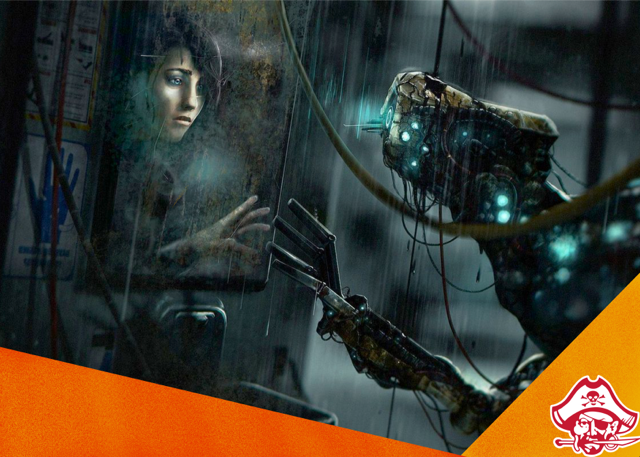Opinion: “SOMA” sends subtle psychological scares
“SOMA” is a survival horror game developed and published by Frictional Games, the very same studio that created the acclaimed “Amnesia” game/series. The base gameplay of “SOMA” holds many similarities to its predecessors in the “Amnesia” series, with stealth and puzzle solving being the main mechanics needed to progress.
The similarities between “SOMA” and its predecessors end when talking about the setting and the story. Unlike “Amnesia,” “SOMA” takes place in the future during the year 2104. The game takes place in an underwater research facility called PATHOS-II. The futuristic and deep sea backdrop creates an entirely different atmosphere compared to previous games released by Frictional Games.
The setting of “SOMA” creates a unique experience for the player. The sense of crawling through the dark, seemingly abandoned, and forgotten underwater facility creates a feeling of despair and isolation for the player punctuated by brief windows of hope that are soon shuttered. The alien and unfamiliar landscape of the ocean floor adds to this feeling of isolation. The research facility has an oppressive and heavy atmosphere that plays into the fear of the dark and of drowning.
Like many other horror games, “SOMA” is not without its share of roaming monsters waiting to jump out and grab you in the form of robots that will kill the player if they reveal themselves. However, unlike many horror games, this is not where “SOMA” gets the majority of its horror. “SOMA” deals with the question of identity and the base question of what makes a person a person.
In “SOMA,” a device has been created that allows humans to take a scan of their brains and implant their memories into a robotic body. The question “SOMA” asks time and time again is, are these robots actually sentient? Are they actually human beings, or are they simply imitations programmed to act like a human?
These questions allow for the game to provide a variety of pathways. Should the player spare the robots out of concern for the person inside? Should the player kill them simply to put them out of their misery? Or does it simply not matter because they aren’t even sentient to begin with? All these choices are left completely up to the player. The game doesn’t tell you what the right or wrong answers are, it simply asks you to do what you believe is right.
Overall, as a horror game, “SOMA” tends to fall a bit flat with repetitive and often unnecessary jump scares. Where “SOMA” really shines is the science fiction psychological thriller within the main story. This story does an incredible job of getting its point across in a really unique and effective way that I haven’t seen done very often with video games. As a science fiction thriller, the story stands very well on its own and shares many parallels with the famous science fiction short story “I Have No Mouth But I Must Scream” by Harlan Ellison.
In my opinion, “SOMA” is a new and inventive breath of fresh air for the horror game genre with a stunning and detailed setting and thought-provoking philosophical and moral questions. Despite its shortcomings, the overall experience is great and I would definitely say it’s worth trying out for those who are looking for something a little different.

